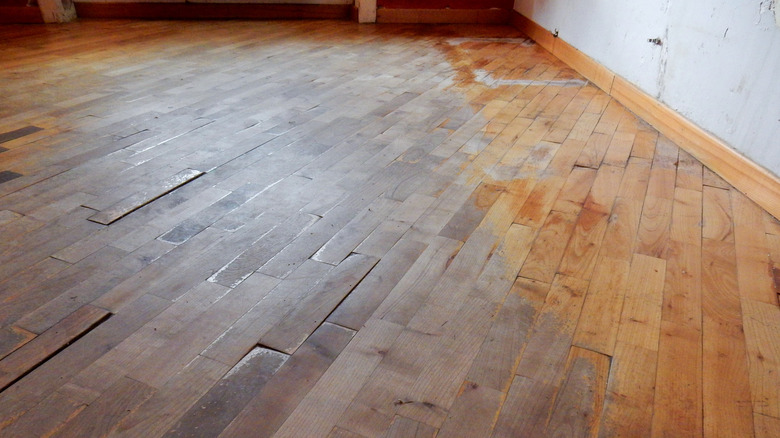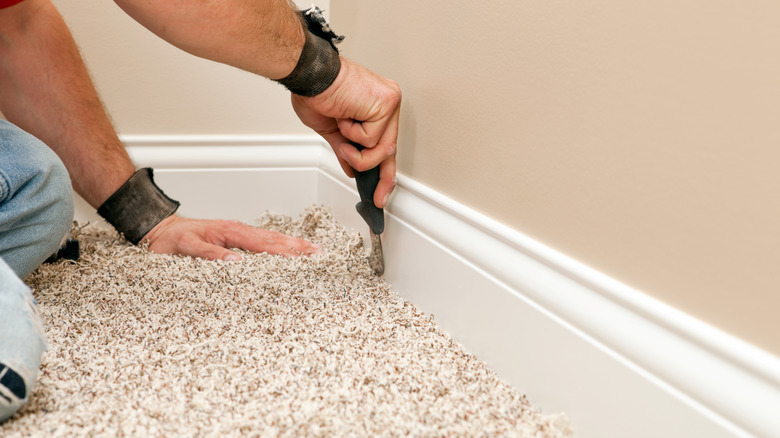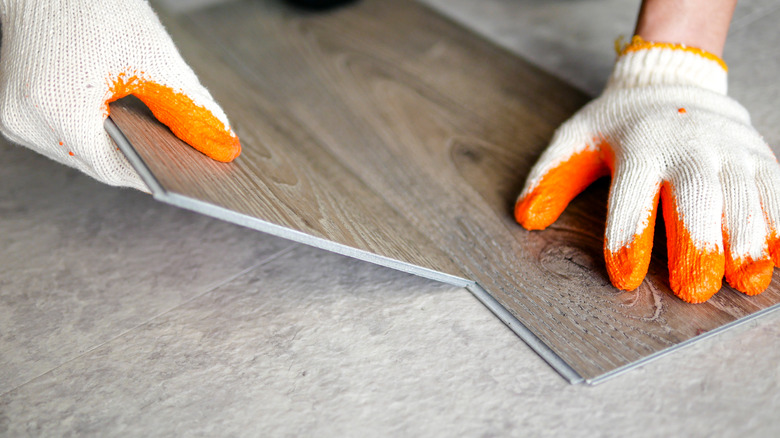The Flooring Solutions That Will Work Best With An Uneven Subfloor
Having smooth, flat, and even floors in their home is the dream of all homeowners. Alas, only a few of them are granted this wish, while others constantly battle with slanting or sagging subfloors. This imperfection doesn't just mar the aesthetic appeal of your home but also makes walking or, in some cases, sitting (hello, constantly sliding chair) difficult. Under such circumstances, the ideal solution is to contact a flooring expert and let them even out your subfloor. However, if your budget doesn't allow that, various DIY flooring solutions, like epoxy and floating floors, will work best with an uneven subfloor.
Remember, you should steer clear of porcelain or ceramic tiles, natural stones, organic hardwood, and solid laminate flooring, as they are poor contenders for uneven subfloors. But before you turn your proverbial DIY mode on, it's essential to investigate the reason behind uneven subfloors. For instance, if the flooring has suffered extensive water damage or if your house's foundation is faulty, it's best to let a professional deal with them. Meanwhile, if the unevenness is just an instance of some prior renovations or your home "settling" in, it's time to pick a sturdy, flexible, budget-friendly, and easy-to-install flooring option for your subfloor.
Epoxy and carpets
Epoxy is a good option for uneven subfloors because it's incredibly flexible and does a wonderful job of leveling your uneven floor (given it's installed adequately). Its long life and elegant look don't hurt, either. Moreover, this chemical compound can easily imitate the look of other flooring options, like hardwood, giving you the freedom to choose the design and color scheme. However, epoxy comes with its fair share of caveats. First of all, this compound requires a sturdy subfloor to work with. This rules out soft subflooring choices like cork. Plus, you'll have to shell out more money if your subfloor needs considerable leveling.
Another DIY-friendly and cost-effective flooring option is carpet. While installing carpets in moisture- and spill-prone areas (like the bathroom and kitchen) is a no-go, other uneven spaces, like your living room, dining room, and bedroom, are fair game. Though the installation process is key here, otherwise, your glued (or tacked) carpet will simply adjust itself to the uneven flooring, meaning it'll wrinkle and sag along the imperfections, ensuring you feel every inch of the problematic areas underfoot. But if you strategically slice and place carpet pads over the dips, it'll help you achieve even flooring for your carpets. You can also go with customizable carpet tiles.
Floating flooring options
If epoxy and carpet don't rock your boat, floating floor solutions, such as engineered wood, luxury vinyl tile, and laminate, might be more your speed. They won't burn a hole in your pocket, and will get the job done. But you'll have to even out the subfloor before installing these types of flooring, since these tiles or planks have a click-and-lock mechanism which will be rendered useless unless they have a smooth surface to work with. You can smoothen the subflooring by grinding and sanding the uneven surface if you're dealing with wood and concrete. Or, you can purchase some self-leveling compound and use that to even out your subfloor.
However, there are some exceptions to this rule. For instance, if the unevenness is less than 4.7 millimeters, you can install luxury vinyl tile as is. Interestingly, you can use engineered wood to even out your floor and then install another flooring solution on top of it. After the floor is even, install the planks or tiles to give your floors an even appearance. If your budget allows, you can even spring for linoleum rolls or tiles, but this floating floor solution is harder to cut, is high-maintenance, and will have to be sealed post-successful installation.


